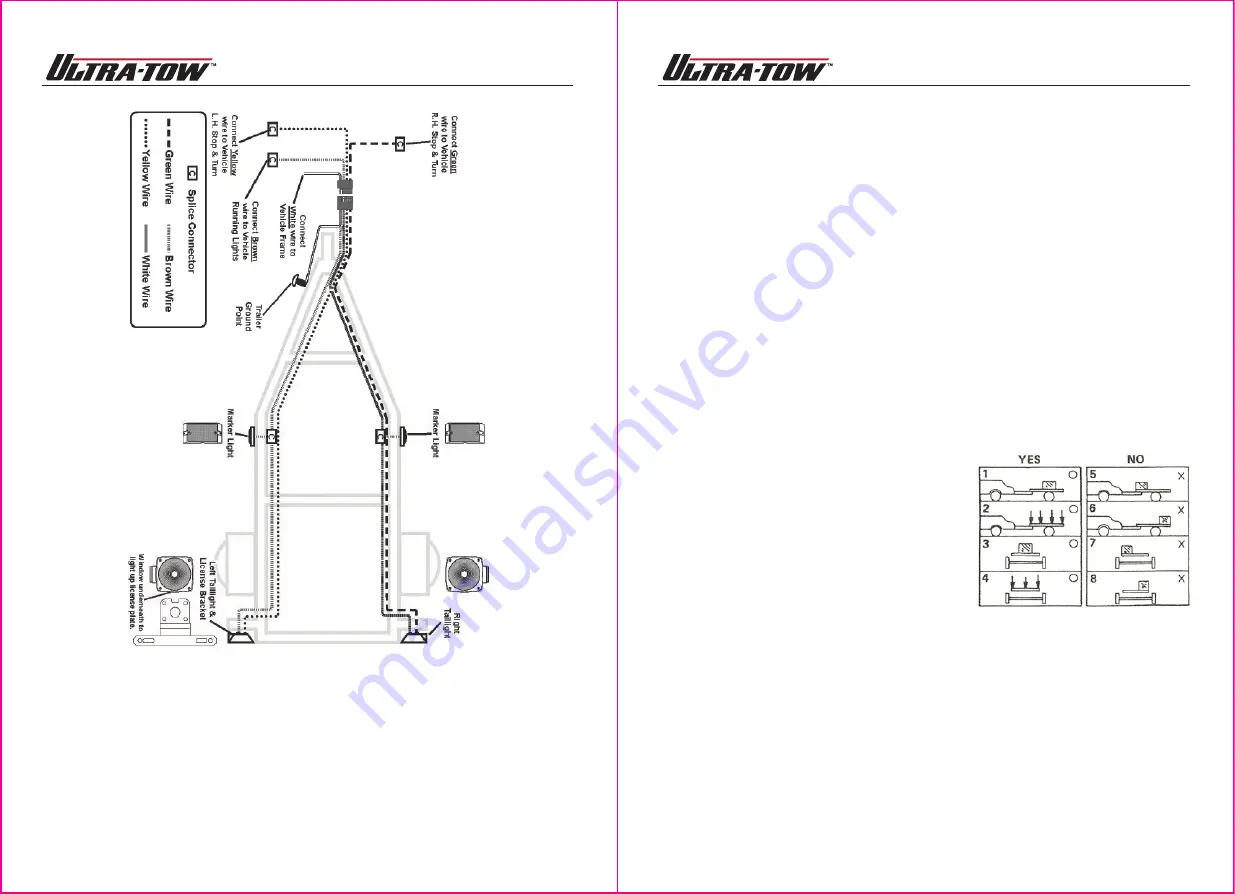
40" X 48" ALUMINUM UTILITY TRAILER KIT
Owner’s Manual
40" X 48" ALUMINUM UTILITY TRAILER KIT
Owner’s Manual
Before Each Use
Check for loose, damaged, or cracked parts on the trailer before each use. Carefully check that
the trailer will operate properly and perform its intended function, including the tire condition
and pressure (see Operating Instructions below). Replace damaged or worn parts immediately.
Never use the trailer even if minor damage is present.
Operating Instructions
Plan your towing, and use the correct trailer for the job. Tools do a better and safer job when
used in the manner for which they are designed.
TOW VEHICLE
• Make sure the tow vehicle is capable of towing the load.
• Excess speed is the second highest cause of car-trailer accidents. Recommended maximum
speed for all passenger cars towing trailers is 45 MPH.
HITCH, BALL, COUPLER
• Check that the hitch on the tow vehicle is capable of towing the trailer. The capability of the
hitch is normally stamped on the hitch bar and the capacity of the ball is stamped on the ball.
• Make sure the coupler and the ball the same size (1-7/8 inch) and are rated equal to or
greater than the load. Only attach the proper size ball to the coupler for towing.
SAFETY CHAINS
• Always use safety chains.
• Check that the safety chains are attached to the tow vehicle with the same length on each side.
• Always cross the chains under the coupler and connect the safety chains to the tow vehicle frame.
• Do not allow the chains to drag on the ground.
LOADING
• Never overload the trailer. Maximum load is 1060 lbs.
• Trailer load size should not exceed trailer’s bed-
board size (40’ x 48’).
• Load the trailer evenly from side to side with 60% of
the load forward of the axle (see picture at right). It is
important that the trailer coupler press down on the
vehicle hitch, but not beyond the trailer capacity of
1060 lbs.
• Reduce the weight in the car trunk and rear seat areas
by the amount of the hitch force from the trailer.
• It is unsafe and also against the law to carry passengers in any trailer.
LIGHTING
• Check lighting before each use and every 100 miles to be sure the stop, tail, and turn signals
are working properly. REPLACE ANY BROKEN LENSES, EFLECTORS, OR BULBS.
• Check the wires for good connections and possible fraying or wearing of insulation.
• Lights supplied with this trailer are for 12-volt DC systems only. Do not attempt to power the
bulbs with any other type of voltage.
TIRES
• Check tires for wear, damage and proper inflation before each use and every 100 miles.
• Tire pressure should be kept at 60 PSI.
• Check and tighten the lug nuts. Torque to 85-90 ft.-lbs.
•
Re-torque the lug nuts after the first 25, 50 and 100 miles and before each tow thereafter.
11 of 15
TRAILER LICENSING NOTICE:
Some states may consider that this trailer kit is and specially constructed or a homemade
vehicle for registration, licensing and/or titling purposes.
The M.C.O. (Manufacturer’s Certificate of Origin) supplied with your trailer must be filled out and
signed by the dealer transferring ownership to you.
When licensing your trailer, you will need the signed M.C.O., a purchase invoice, cash register
receipt, or bill of sale showing the purchase and retail sales tax or use tax collection by the
retailer. Take these to your local Department of Motor Vehicles and upon payment of the
appropriate State fees, you will be issued a title, registration and license plate (if required).
Some states will require inspection of the assembled and finished trailer kit before issuing a title
registration/license.
If you require additional information or guidance on licensing or titling, please consult your
State Department of Motor Vehicles.
10 of 15



























